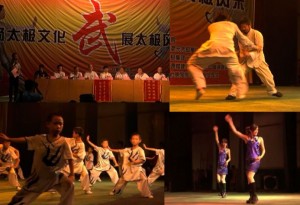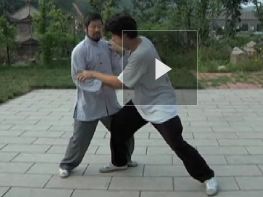A clip from the Ireland 2010 workshop. Observe closely how Master Chen legs are always part of each move.
admin2
“Distance & Length generate power of the stick” Master Chen made it look easy. Through many years training, all his body parts can work together.
In this clip, Master Chen shows the intricacies of the transition moves between 12 (The Fist of Covering Hand) and 13 (Buddha’s Warrior Attendant Pounds Mortar).
In this clip, Master Chen corrected a common mistake in yilu practice. Normally, people use one part of the body to accomplish two tasks. This causes the use of local power, which means you are using your hand to grab but also use it to make moves. This is an error in taijiquan practice. On the other hand, you should use global power (heli), which means that if you use your hand to grab, you have to use your elbow to pull or push.
It was a great workshop with tons of push hands. Thanks very much for all the hard work!
It was a great workshop with tons of push hands. Thanks very much for all the hard work!
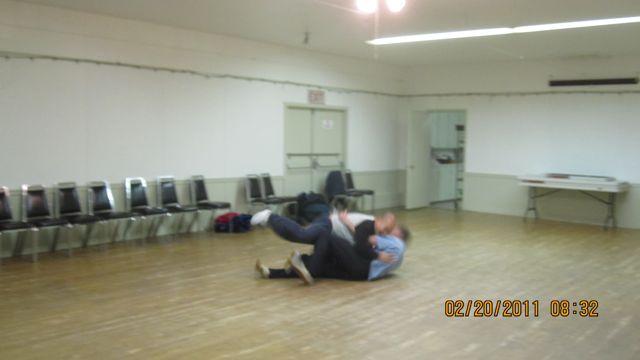
[nggallery id=84]
By: Chen Zhonghua 陈中华. Language: English 英文. Length: 49 minutes 分钟. Year: 2005 年
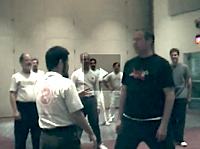
Participants of this workshop, please contact czh.sites@gmail.com for free access.
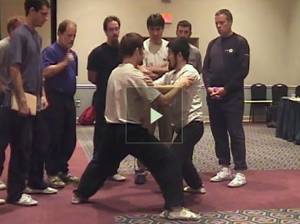
Thumbnail
By: Chen Zhonghua 陈中华. Language: English 英文. Length: 46,47,56 minutes 分钟. Year: 2005 年
Disc 2: Hands on, 2-person drill,Q&A, Yilu Detail
Disc 3: Hands on, sword, broadsword
Disc 4: Q&A, theory lecture.
Participants of this workshop, please contact czh.sites@gmail.com for free access.
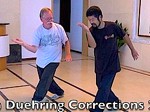
Emphasis on correct foot placement, relation between knee and foot, transition moves, energy intent
To preview a correction video, see Byron correction.
Forms corrected
2. Block Touching the Coat (Lan Zha Yi)
3. Six Sealing and Four Closing (Liu Feng Si Bi)
Read more
Here are some videos of our activities on the mountain: Push hand with guests, Dinner, Morning Mist
Read more
Originally written by: Matej Velicky There are many stories about Chen Fake and Hong Junsheng and their fighting ability.
When your opponent is tight, you rotate to get out; when he is loose, you hit directly. The video clip was made at a workshop at the De Glind in Holland in April 2008. Master Chen Zhonghua was assisted by Pavel Codl.
This photo graph is designed to deal with knee problems in training.
In order to avoid injuries, the most important thing to avoid is the knee pushing outward away from the body, as illustrated in the picture above: the yellow dot cannot move towards the blue line. The blue line is an imagined wall that the knee cannot push against.
- Question: What about the principle of the knee going up and down?
The knee must act like a ball, it aims up and down but it does not physically move up and down at all. The aiming of the knee, one up and the other down, is called “intent” for the knee. - Question: What about the concept of the knee not exceeding the foot?
In general, that principle is a correct one. But as a matter of principle, it is more important to ensure that the kua pushes down towards the knee and the knee pushes towards the foot (floor). This principle ensures that the knee does not have a horizontal orientation, thus does not move sideways outside of the foot.
The following youtube clip shows the actions of the rear knee.
Rotation with just enough pushing force. A good example of this type of energy or action is when screwing. The turning and the pushing that makes the screw go in is “grinding”. Otherwise there would be only turning, or pushing. This type of energy is highly stressed in the Chen Style Taijiquan Practical Method system.
In Chinese pinyin: Nian.
- Split: The action of two (or more) parts of the body moving away from each other. The key is that there must be a fixed spot (does not mean a real physical spot) in this action. This fixed point is also the center of the action.
Powering Up: To increase size, length or compression within a fixed area.
Momentum: inertia of force. In taijiquan practice, momentum force simply means movement that cannot be stopped.
- Sinking
- With the baihui point fixed, the movement downward of all or some other parts of the body.
- Any part of the body can be split into yin and yang. When one part is fixed and the other part goes away from the fixed part, it is also called sinking. Therefore, sinking does not have to have a downwards direction.
Timing: The activity and force that is caused by the utilization or manipulation of time or lack of time.
The space between two points of action. The distance between two points is regarded as a space that can be manipulated in taiji actions.

